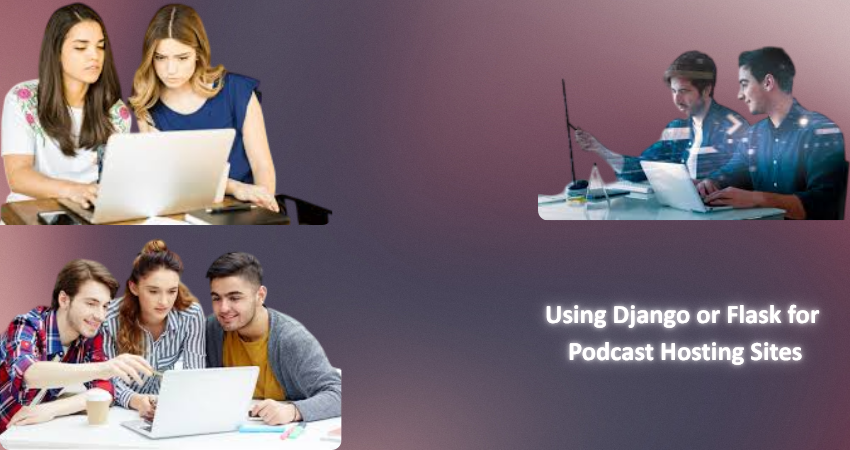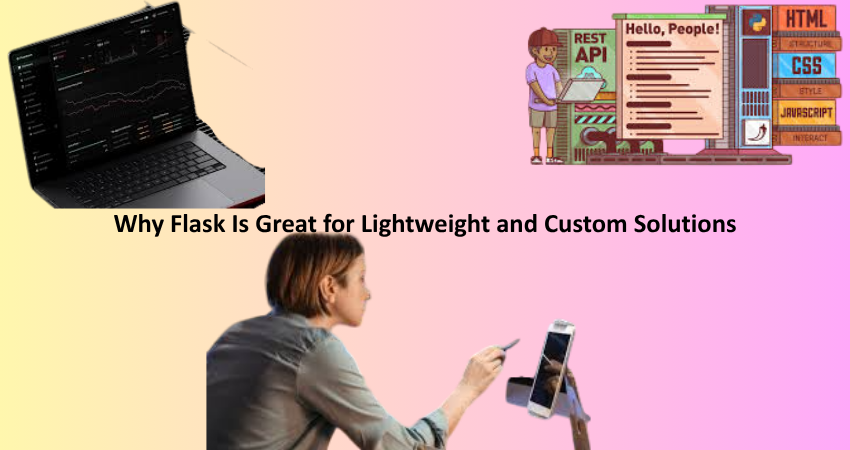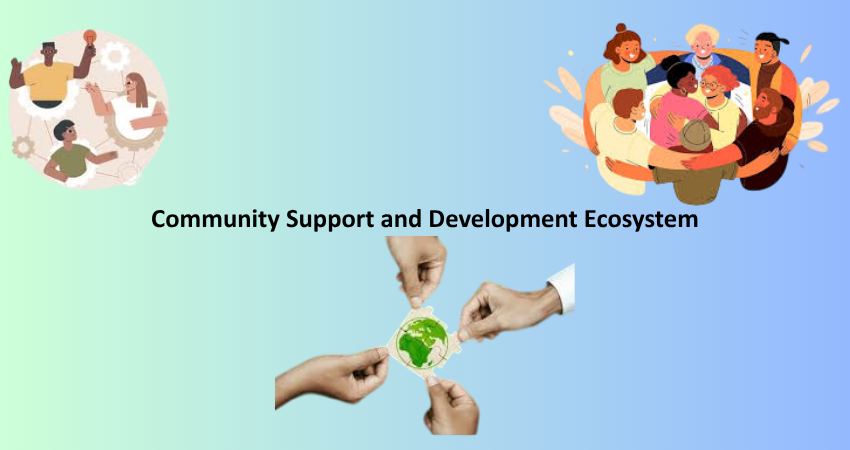
Introduction
Within a span of just 10 years, enormous growth trends have been observed in the podcast industry. Today, this small niche has transformed into a truly worldwide form of mainstream entertainment and education-at-large. As the number of players and listeners has continued to rise, so has the call for reliable and scalable and customizable podcast-hosting platforms. Whether you are a developer working on a podcast platform for clients or a podcast creator wanting full control over your content, frameworks like Django and Flask provide excellent ways to create an efficient and dynamic podcast-hosting website.
Both Django and Flask are web development frameworks based on Python that are suited for the backend side of data-driven web applications. Django is often spoken of with the expression “batteries included” to express the variety of its built-in features, while Flask gains its recognition from being minimalistic and yet flexible. The choice between them would very much depend upon the complexity of the project, the timeline, and the degree of customization needed. In this article, we shall evaluate the advantages and disadvantages of Django versus Flask in the context of podcast hosting sites, thus serving as a guide for developers and business entrepreneurs.
Why Django Is Ideal for Full-Featured Podcast Platforms
Built-In Features for Rapid Development
Integrating this entire package in a single framework makes it D.Jango one of the most competent choices for podcast-hosting platforms. An ORM (Object-relational mapping), authentication system, admin interface, routing, form handling, and security features are included by default. Those developers utilizing Django for podcast websites will find the foundation particularly potent in features such as episode uploads, user accounts, analytic dashboards, and RSS feeds without the need for outside vendors.
The admin interface is very useful for managing content for podcasts, as it takes little code for a podcaster or site administrator to add an episode, edit an episode, delete an episode, add categories, track user activities by monitoring reports, and so on—all without requiring extra code on the frontend. This provides speedier deployment and easier maintenance. Django allows the developer to concentrate on the podcast-centric logic and the user experience; therefore, it qualifies for a highly productive framework application to create a whole site for the podcast.
Scalable Architecture for Growing Audiences
Now, with those ideas floating, I have put foresight into the development of future apps on Django. As the podcast apps become endless, scalability is one of the most important parameters. The architectural design of Django is born for scalability-from the very first time support for modular apps, meaning every component of your project could be put up separately into user management, audio streaming, monetization, and analytics. That way, when traffic demands it, you can scale independent services without having to do a massive refactoring of your application.
Django works well with caching using Memcached, Redis, background task management systems like Celery, and asynchronous servers to handle real-time needs. These might include a podcast site that anticipates lots of audio streaming coupled with requests and downloads from users. Because of data modularity, it easily allows seamless interaction with strong basic infrastructures which will very well guarantee performance and reliability. Most importantly, since the enterprise-level projects take great advantage of Django, it has quite a big community support and matching documentation in case of tackling any scalability challenges.
Why Flask Is Great for Lightweight and Custom Solutions

Flexibility and Minimalism for Tailored Designs
Keeping the utmost autonomy on the credits to the structure of an application can only come through the use of Flask, a BOA offering to developers. It suits podcast platforms with different workflows or highly personalized experiences very well. The opposite of being prepackaged as is the case with Django, Flask, follows a minimalistic philosophy, giving the developer the right of choice in integrating modules they genuinely need such as SQLAlchemy for ORM, Jinja2 for templating, and Flask-Login for authentication.
This level of freedom is valuable for a project where the developer seeks to keep the codebase clean and create features from very basic components. For example, if your podcast site is about streaming audio only with a very simple UI, Flask allows you to create a lightweight, dedicated approach without the overhead of the prepackaged features in the Django ecosystem. Flask also allows for API-first development, a perfect fit for headless podcast platforms where the front end can then be created using JS frameworks such as React or Vue.
Easier Debugging and Learning Curve
Flask’s simplicity also carries over into the learning curve, which fits beginning developers learning about Python web development or those in a small team. Its design encourages understanding of all the given components, which helps during the debugging process and for the later maintenance of the project. Being light on resources means faster loads and less memory-hogging pages-flip sides to the better UX.
Using a few hundred lines of code, developers are free to build a simple podcast site for episode listing, audio stream, and an RSS feed generator. The Flask development server is very easy to configure for the rapid testing of changes and that propels the development cycle forward. Such fluidity caters well to MVPs (Minimum Viable Products) or experimental podcast platforms that need to be set live but will likely evolve through user feedback.
Managing Audio Files and Streaming Logic
Storage Solutions and File Handling
Manage all audio files effectively. It links them with a podcast hosting application. To upload, store and retrieve any MP3 or other audio formats using Django and Flask-based hosting solutions, one has to write code. In Django, the model fields FileField and ImageField support file handling. In addition, it touches complete cooperation with cloud storage like Amazon S3 and Google Cloud Storage. Equivalent to that built with Flask is what can be done with file uploads via libraries such as Flask-Uploads or custom werkzeug facilities.
This structural feature shall apply to file storage for metadata use, timestamps of uploaded files, user-episode linkage, and, therefore, clean URL paths for downloading and streaming. The majority are tied to CDNs for almost every production site to minimize the latency while providing the same playback quality across different regions. These include primary concepts in any framework such as file size limits, file validation, and asynchronous uploading, meant to optimize performance and user-friendliness.
Implementing Efficient Streaming and Playback
When audio streams are concerned, those would require a different set of considerations than auto-downloading a static file from remote locations. Podcast hosting sites should thus support partial downloads and playback buffer-friendly. In this case, upon which, minimalist, Flask could require third-party libraries or personalize middleware to allow for convenient HTTP range requests that serve as the crux of media streaming. Distinctly, Django supports in-house middleware along with various third-party packages, such as django-sendfile, to allow partial delivery of contents.
This smooth audio experience is built into a platform by coupling HTML5 audio players such as Plyr or MediaElement.js with backend endpoints serving audio chunks. Normally these might have some form of range header and syntax to identify the proper file type, as in a MIME type, and may also or should be secure transfer endpoints. All of this will work perfectly for both frameworks with reasonable configurations, but may be a little faster in Django owing to the mature ecosystem resulting in plugins and middleware quickly available. Application to either framework still presents with thoughtfulness towards streaming within the experience to keep listeners happy and upload bandwidth low.
User Management and Access Control
Creating User Accounts and Profiles
The user authentication and profile management feature gives a lot more in terms of personality to a podcast site, offering subscription plans, and allowing content upload. Has an authentication framework with built-in models and views for registration, login, password reset, and session management. Built-in user model can also be extended by developers with additional custom fields representing, for instance, profile pictures, favorite episodes and listening history. An easy way to manage users and permissions is also possible with the Django admin.
Flask does have great flexibility in implementing user authentication. Modules like Flask-Login, Flask-Security, or Flask-User provide the different, modular solutions on which a developer can build according to his specification. This is where the real power of Flask lies-if one needs to build custom user experience or work with third-party identity providers like OAuth, SSO, etc. Although Flask may require more time to set up than in Django, it has very impressive documentation and community support for developing secure and efficient authentication systems.
Managing Access Levels and Monetization
When the podcast applications will have levels of accessibility according to free, paid subscribers, and admin accounts, control and permission management with role-based access will be handled via Django’s django.contrib.auth and django-guardian for online and offline access. Roles are simply defined in the Django Groups model and can easily set restrictions from specific sensitive contents. This is highly favorable for tiered podcasting platforms with bonus or early access episodes for subscribers.
The same can be accomplished in Flask with the help of either extensions or through decorators that directly enforce access rules. Routing in Flask allows for the easy creation of endpoints based on roles. Integrating payments (with Stripe, PayPal, etc.) is made simple in both frameworks. Payment gateways give the developers a way to create a dynamic setup through APIs and webhooks that would allow modification of user roles based on the subscription status for purposes like monetizing exclusive episodes, listening to an ad-free experience, or donations.
Community Support and Development Ecosystem

Libraries, Plugins, and Third-Party Tools
These two ecosystems are arguably Django’s greatest strength. With too many plugins to count, developers can now find ready-to-use solutions for podcast-specific needs, such as media library management, CMS integration, REST APIs, and analytics dashboards. Supplies like Django REST Framework (DRF) lend great support in uncomplicated API building, which is needed in any podcast platform that exposes a mobile app or has an external integration.
Flask, on the other hand, is minimalist; however, the extensions are becoming a growing world of quality. Flask-SQLAlchemy, Flask-WTF, and Flask-Migrate are a few of the main extensions that any developer working with Flask would use for database management and form handling. The modularity of Flask makes it an easy fit for integrating niche tools and home-grown solutions. Whether you need audio fingerprinting, natural language processing for transcripts, or search engines like Elasticsearch, Flask will allow you to build your stack your way without imposing any rigid structure.
Community Size and Documentation Quality
Django is an older framework than Flask, and therefore, it possesses a larger community, which means more tutorials, more detailed documentation, and third-party resources, making troubleshooting easier and speeding up the learning process for new developers. The official documentation on Django is certainly one of the most respected in the industry and covers every subject from introductory to very advanced deployment techniques.
Flask, too, has quite good community support; particularly, it is favored by developers who are keen on using lightweight and customizable tools. The documentation is concise and beginner-friendly, whereas the community is reportedly very much active in open-sourcing contributions. Furthermore, there’s a flood of blogs, GitHub projects, and community forums associated with Flask on best practices of building and scaling minimal web applications, including those for podcasting, in startup circles.
Conclusion
The choice between Django and Flask for a podcast hosting site depends, above all, on what goals you have in mind and what resources you foresee devoting to this work in the short and long run. Django supplies a complete framework that can be used for the rapid development of a site that is well-managed for content and scaled to an enterprise level. Definitely, this complex and multifunctional platform may be in need of such features as user accounts, analytics, and monetization models. So, in this case, Flask would give developers an upper hand because it offers complete freedom to fine-tune the experience however they wish.
Both frameworks present adequate opportunities for ensuring excellent functionalities in terms of podcasting and development. The unique strengths of Flasks against Django may help to carve even a more important trade-off between two sets of technical parameters and business objectives. In essence, whether speed, customization, or scalability is prioritized, the available frameworks for building with Python offer a strong springboard for developing a memorable, dependable, and inventive podcast platform.